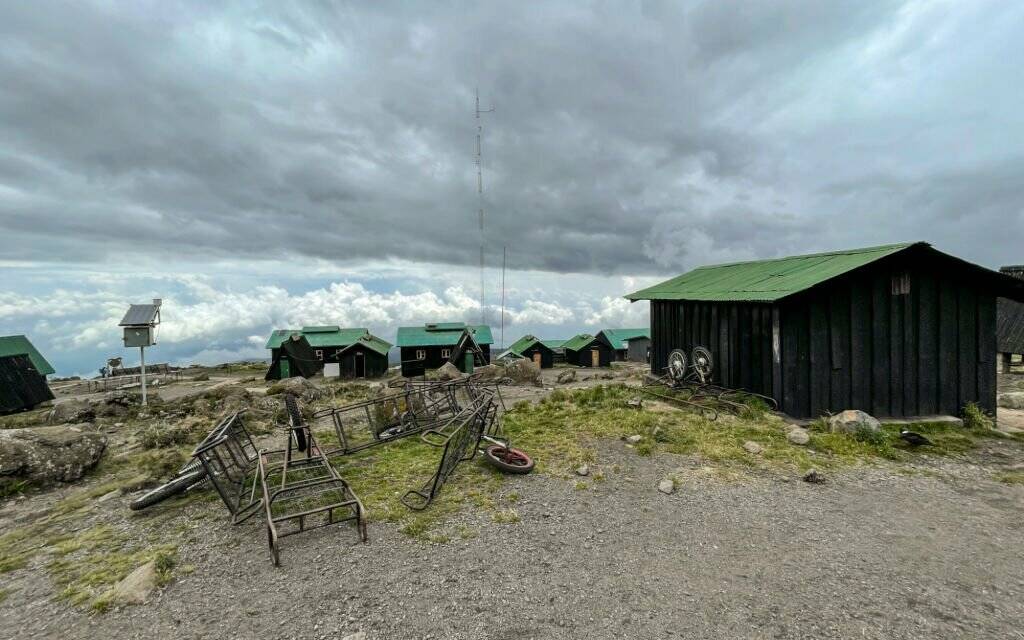Introduction to Kilimanjaro Rescue
Kilimanjaro Rescue Welcome to the ultimate guide to ensuring safety and survival while climbing Mount Kilimanjaro, the highest peak in Africa. As an experienced mountaineer, I understand the risks and challenges that come with conquering this majestic mountain. In this article, I will provide you with valuable insights and tips to help you prepare for a safe and successful expedition and learn all about Kilimanjaro Rescue. Whether you are a seasoned climber or a novice adventurer, this guide will be your go-to resource for navigating the treacherous terrain and unpredictable weather conditions of Kilimanjaro.
Understanding the Risks and Challenges of Climbing Mount Kilimanjaro
Climbing Mount Kilimanjaro is an exhilarating and rewarding experience, but it is not without its risks. The mountain’s altitude, extreme weather conditions, and rugged terrain pose significant challenges to even the most seasoned climbers. It is crucial to understand these risks and prepare yourself mentally and physically before embarking on this adventure.
Altitude sickness is one of the most common challenges climbers face on Kilimanjaro. As you ascend to higher altitudes, the air becomes thinner, and your body may struggle to acclimatize. This can lead to symptoms such as headaches, nausea, dizziness, and, in severe cases, pulmonary or cerebral edema. Proper acclimatization and knowing how to recognize and manage altitude sickness are essential for your safety and survival on the mountain.
Another risk to consider is the unpredictable weather conditions on Mount Kilimanjaro. The mountain’s proximity to the equator means that weather patterns can change rapidly. It is not uncommon to experience scorching heat, freezing temperatures, strong winds, and heavy rainfall all in one day. Being prepared for these weather fluctuations and having the necessary gear and equipment is vital to your safety and well-being.
The importance of Proper Training and Physical Preparation
Physical fitness plays a crucial role in the success of your Kilimanjaro expedition. Climbing Mount Kilimanjaro is a physically demanding endeavor that requires endurance, strength, and cardiovascular fitness. Engaging in a comprehensive training program before your climb will not only improve your chances of reaching the summit but also reduce the risk of injuries and altitude-related illnesses.
A well-rounded training program should include cardiovascular exercises like running or cycling to improve your endurance. Strength training exercises, such as weightlifting or hiking with a weighted backpack, will help build the necessary muscle strength for carrying your gear and navigating the challenging terrain. Additionally, incorporating regular hiking and hill training into your routine will prepare your body for the uphill climbs and descents you will encounter on the mountain.
Proper training should also include practicing hiking with a fully loaded backpack to simulate the weight you will carry during your Kilimanjaro climb. This will help you assess your stamina and identify any adjustments you need to make to your gear or packing list. Remember, the more prepared and physically fit you are, the better equipped you will be to face the challenges of the mountain.
Essential Gear and Equipment for Kilimanjaro Climb
Having the right gear and equipment is vital for your safety and comfort on Mount Kilimanjaro. The mountain’s harsh conditions require specialized gear that can withstand extreme temperatures, high altitudes, and unpredictable weather. Here are some essential items you should include in your Kilimanjaro packing list:
Layered Clothing: Dressing in layers allows you to adjust your clothing according to the changing weather conditions. Include moisture-wicking base layers, insulating mid-layers, and a waterproof outer shell to protect you from rain, wind, and cold temperatures.
Quality Hiking Boots: Invest in a pair of sturdy, waterproof hiking boots with good ankle support. Proper footwear is essential for navigating the uneven and rocky terrain of Kilimanjaro.
Sleeping Bag and Sleeping Pad: Choose a high-quality sleeping bag that is rated for sub-zero temperatures. A comfortable sleeping pad will provide insulation and cushioning during the nights spent in mountain huts or tents.
Headlamp: A reliable headlamp is essential for navigating in the dark during early morning summit attempts or when nature calls during the night.
Trekking Poles: Trekking poles provide stability and support, especially during steep ascents and descents. They help reduce strain on your knees and improve balance.
Water Treatment System: Ensure you have a reliable water treatment system, such as water purification tablets or a portable water filter, to ensure a safe and clean water supply throughout your climb.
First Aid Kit: Carry a well-stocked first aid kit that includes essential items like bandages, blister treatment, pain relievers, altitude sickness medication, and any personal medications you may require.
Remember, investing in high-quality gear and equipment is an investment in your safety and overall climbing experience. Don’t compromise on the essentials.

Acclimatization and Altitude Sickness Prevention
Acclimatization is a critical process that allows your body to adjust to the reduced oxygen levels at higher altitudes. Failing to acclimatize properly can lead to altitude sickness, which can be life-threatening. To ensure your safety and increase your chances of reaching the summit, follow these acclimatization and altitude sickness prevention guidelines:
Slow and Steady Ascent: Climbing Kilimanjaro is not a race. Take your time and allow your body to adjust gradually to the altitude. The recommended duration for a successful Kilimanjaro climb is around 7-9 days, depending on the route.
Drink Plenty of Water: Staying hydrated is crucial for acclimatization. Aim to drink at least 3–4 liters of water per day to maintain proper hydration levels.
Avoid Alcohol and Tobacco: Alcohol and tobacco can impair your body’s ability to acclimatize. It is best to avoid these substances during your climb.
Listen to your body: Pay attention to any symptoms of altitude sickness, such as headaches, nausea, dizziness, or difficulty breathing. If you experience severe symptoms, descend to a lower altitude immediately.
Consider Medication: Consult with your doctor about medications that can help prevent altitude sickness. Acetazolamide (Diamox) is a commonly prescribed medication that can aid in acclimatization.
By following these guidelines and allowing your body to adapt to the changing altitude, you significantly reduce the risk of altitude-related illnesses and increase your chances of a successful summit.
Hiring a Reputable Guide and Porter Services
When climbing Mount Kilimanjaro, it is highly recommended to hire the services of a reputable guide and porter team. A knowledgeable guide will not only ensure your safety but also provide valuable insights and assistance throughout the climb. Here are a few reasons why hiring a guide and porter is essential:
Local Knowledge and Expertise: Experienced guides are familiar with the mountain’s routes, weather conditions, and potential hazards. They can navigate tricky sections, provide guidance on acclimatization, and make informed decisions regarding the safety of the group.
Safety and Emergency Preparedness: Guides are trained in wilderness first aid and can respond effectively to any medical emergencies that may arise. They carry first-aid kits and have a network of communication with Kilimanjaro rescue teams in case of emergencies.
Logistical Support: Porters will carry the majority of your gear, leaving you free to focus on the climb. They will set up camp, prepare meals, and ensure that you have a comfortable experience on the mountain.
When selecting a guide and porter service, do thorough research, read reviews, and choose a company with a good track record of safety and customer satisfaction. Remember, your guide and porter team will play a crucial role in your overall climbing experience.
Emergency Communication and Kilimanjaro Rescue Options
Despite taking all the necessary precautions, emergencies can still occur on Mount Kilimanjaro. It is essential to familiarize yourself with the available emergency communication and Kilimanjaro rescue options to ensure prompt assistance in case of unforeseen circumstances. Here are some key resources and protocols to keep in mind:
Mobile Phone Coverage: Parts of Kilimanjaro have mobile phone coverage, enabling you to communicate with Kilimanjaro Rescue teams or your guide in case of emergencies. However, be prepared for intermittent or limited coverage, especially at higher altitudes.
Emergency Evacuation Insurance: Consider purchasing emergency evacuation insurance that covers the cost of helicopter rescue or medical evacuations. Check with your insurance provider to ensure you have adequate coverage for high-altitude Kilimanjaro Rescue
Mountain Kilimanjaro Rescue Teams: Kilimanjaro National Park has a dedicated mountain rescue team that can be contacted in case of emergencies. Your guide will have the necessary communication channels to reach them quickly.
Comprehensive Emergency Plan: Work with your guide and porter team to create a comprehensive emergency plan before starting your climb. This plan should include protocols for communication, evacuation, and emergency medical care.
Being prepared and having a clear understanding of the emergency communication and rescue options available will provide peace of mind and ensure a swift response in times of crisis.
Creating a Comprehensive Emergency Plan
A comprehensive emergency plan is a vital component of your safety strategy while climbing Mount Kilimanjaro. This plan should address various scenarios and outline the necessary steps to be taken in case of emergencies. Here are some key elements to consider when creating your emergency plan for Kilimanjaro Rescue:
Communication Protocols: Define the primary and backup communication methods to be used in case of emergencies. Ensure that all members of your climbing team are familiar with these protocols.
Emergency Contact Information: Compile a list of emergency contact numbers, including the local Kilimanjaro Rescue teams, your guide’s contact information, and any relevant embassy or consulate numbers.
Evacuation Routes: Familiarize yourself with the evacuation routes and emergency exit points on the mountain. Discuss these routes with your guide, and ensure everyone knows the evacuation procedures.
Medical Supplies and First Aid: Carry a comprehensive first aid kit that includes essential medical supplies and medications. Ensure that at least one member of your climbing team is trained in wilderness first aid.
Emergency Shelter and Survival Gear: Pack emergency shelter options like a lightweight tent or bevy bag, as well as survival gear such as a fire starter, emergency blanket, and signaling devices.
By creating a comprehensive emergency plan and discussing it with your climbing team, you will be better prepared to handle emergencies and ensure the safety of everyone involved.
Tips for Staying Safe and Ensuring Survival on Kilimanjaro
To further enhance your safety and survival on Mount Kilimanjaro, here are some additional tips to keep in mind:
Listen to Your Guide: Your guide has extensive experience and knowledge of the mountain. Follow their advice and instructions at all times.
Stay Hydrated and Well-Nourished: Proper hydration and nutrition are crucial for your energy levels and overall well-being. Drink plenty of water and eat nourishing meals to maintain your strength throughout the climb.
Practice Good Hygiene: Maintain good hygiene practices to prevent illnesses. Carry hand sanitizer, use it frequently, and follow proper waste disposal protocols.
Buddy System: Always climb with a buddy or in a group. Look out for each other and communicate any concerns or difficulties you may have.
Respect the Mountain: Kilimanjaro is a sacred and fragile ecosystem. Respect the wildlife, flora, and fauna by adhering to park regulations and leaving no trace behind.
Conclusion: Enjoying the Adventure While Prioritizing Safety on Mount Kilimanjaro
Climbing Mount Kilimanjaro is a thrilling and life-changing adventure. By understanding the risks, preparing properly, and prioritizing safety, you can ensure a successful and memorable experience on Africa’s highest peak. Remember, safety should always be your top priority. So, lace up your boots, pack your gear, and embark on this incredible journey with confidence, knowing that you are well-equipped to overcome any challenges that come your way. Stay safe, be prepared, and enjoy the breathtaking beauty of Mount Kilimanjaro!
CTA:
Are you ready to conquer Mount Kilimanjaro? Prepare yourself for this epic adventure by following the tips and guidelines outlined in this guide. Remember, safety should always be your top priority. If you found this article helpful, please share it with your fellow adventurers. Together, we can ensure that everyone enjoys a safe and successful climb on Africa’s highest peak.
